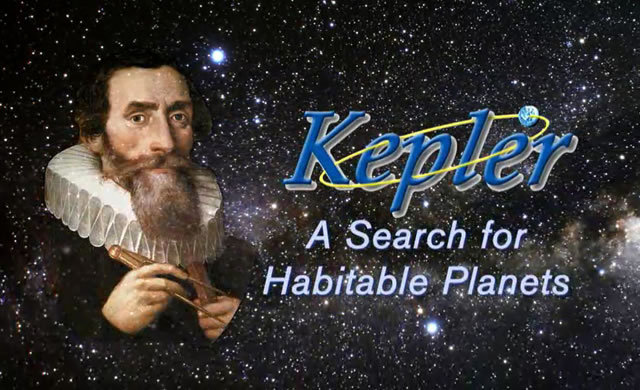
Lo strumento HARPS dell’ESO trova un esopianeta di massa simile alla Terra in orbita intorno ad Alfa Centauri B
Gli astronomi europei hanno scoperto un pianeta di massa simile a quella della Terra in orbita intorno a una stella del sistema di Alfa Centauri – il più vicino alla Terra. È anche l’esopianeta più leggero mai scoperto intorno a una stella simile al Sole. Il pianeta è stato scoperto usando lo strumento HARPS installato sul telescopio da 3,6 metri all’Osservatorio di La Silla dell’ESO in Cile. I risultati saranno pubblicati on-line dalla rivista Nature il 17 ottobre 2012. Alfa Centauri è una delle stelle più brillanti nel cielo australe e il sistema stellare più vicino al nostro Sistema Solare – a solo 4,3 anni luce di distanza. In realtà è una stella tripla: un sistema costituito da due stelle simili al Sole in orbita stretta l’una intorno all’altra, Alfa Centauri A e B, e da una stella rossa più distante e debole nota come Proxima Centauri. Fin dal diciannovesimo secolo gli astronomi hanno speculato sull’esistenza di pianeti in orbita intorno a questi corpi celesti, le più vicine dimore possibili per la vita al di là del Sistema Solare, ma ricerche di precisione sempre crescente non avevano rivelato nulla. Fino ad ora. “Le nostre osservazioni con lo strumento HARPS si svolgono in un periodo di più di quattro anni e hanno rivelato un segnale piccolo, ma reale, da un pianeta che orbita intorno a Alfa Centauri B ogni 3,2 giorni” dice Xavier Dumusque (Osservatorio di Ginevra, Svizzera e Centro de Astrofisica da Universidade do Porto, Portogallo), primo autore dell’articolo. “È una scoperta straordinaria e ha spinto al limite la nostra tecnica!”. L’equipe europea ha rivelato il pianeta osservando le piccole oscillazioni nel moto della stella Alfa Centauri B, dovute all’attrazione gravitazionale del pianeta in orbita. L’effetto è molto piccolo – fa spostare la stella avanti e indietro di non più di 51 centimetri al secondo (1,8 km/ora), all’incirca la velocità di un bambino a quattro zampe. Questa è la massima precisione mai ottenuta con questo metodo. Alfa Centauri B è molto simile al Sole ma leggermente più piccola e debole. Il pianeta appena scoperto, di massa poco più grande di quella della Terra, orbita a circa sei milioni di chilometri della stella, molto più vicino di quanto sia Mercurio al Sole nel Sistema Solare. L’orbita dell’altra componente luminosa della stella doppia, Alfa Centauri A, la mantiene a centinaia di volte di distanza, ma dovrebbe essere un oggetto molto brillante nel cielo del pianeta. Il primo esopianeta intorno a un stella simile al Sole è stato trovato dalla stessa equipe nel 1995 e da allora sono state confermate più di 800 scoperte, ma la maggior parte è di pianeti molto più grandi della Terra e molti sono grandi come Giove. La sfida con cui gli astronomi si devono confrontare ora è di trovare e caratterizzare un pianeta di massa simile a quella della Terra in orbita nella zona abitabile intorno a un’altra stella. Il primo passo è stato fatto ora.
Fonte/Leggi tutto → ESO.org

Planet Found in Nearest Star System to Earth – ESO’s HARPS instrument finds Earth-mass exoplanet orbiting Alpha Centauri B
European astronomers have discovered a planet with about the mass of the Earth orbiting a star in the Alpha Centauri system — the nearest to Earth. It is also the lightest exoplanet ever discovered around a star like the Sun. The planet was detected using the HARPS instrument on the 3.6-metre telescope at ESO’s La Silla Observatory in Chile. The results will appear online in the journal Nature on 17 October 2012. Alpha Centauri is one of the brightest stars in the southern skies and is the nearest stellar system to our Solar System — only 4.3 light-years away. It is actually a triple star — a system consisting of two stars similar to the Sun orbiting close to each other, designated Alpha Centauri A and B, and a more distant and faint red component known as Proxima Centauri. Since the nineteenth century astronomers have speculated about planets orbiting these bodies, the closest possible abodes for life beyond the Solar System, but searches of increasing precision had revealed nothing. Until now. “Our observations extended over more than four years using the HARPS instrument and have revealed a tiny, but real, signal from a planet orbiting Alpha Centauri B every 3.2 days,” says Xavier Dumusque (Geneva Observatory, Switzerland and Centro de Astrofisica da Universidade do Porto, Portugal), lead author of the paper. “It’s an extraordinary discovery and it has pushed our technique to the limit!” The European team detected the planet by picking up the tiny wobbles in the motion of the star Alpha Centauri B created by the gravitational pull of the orbiting planet. The effect is minute — it causes the star to move back and forth by no more than 51 centimetres per second (1.8 km/hour), about the speed of a baby crawling. This is the highest precision ever achieved using this method. Alpha Centauri B is very similar to the Sun but slightly smaller and less bright. The newly discovered planet, with a mass of a little more than that of the Earth, is orbiting about six million kilometres away from the star, much closer than Mercury is to the Sun in the Solar System. The orbit of the other bright component of the double star, Alpha Centauri A, keeps it hundreds of times further away, but it would still be a very brilliant object in the planet’s skies. The first exoplanet around a Sun-like star was found by the same team back in 1995 and since then there have been more than 800 confirmed discoveries, but most are much bigger than the Earth, and many are as big as Jupiter. The challenge astronomers now face is to detect and characterise a planet of mass comparable to the Earth that is orbiting in the habitable zone around another star. The first step has now been taken.
Source/Continue reading → ESO.org
VIDEO:






















Pingback: Possibilità di Vita intorno ad Alpha Centauri B – Possibilities of life around Alpha Centauri B | DENEB Official ©
Pingback: Caccia al Pianeta Alieno più vicino grazie a Raro Allineamento Stellare – Hunt for Closest Alien Planet Gets Rare Boost From Stellar Alignment | DENEB Official ©
Pingback: Le Stelle più vicine alla Terra (infografica) – The Nearest Stars to Earth (Infographic) | DENEB Official ©